Welcome to our blog post about squirrels, one of the most fascinating animals in the world! Squirrels belong to a group of animals called rodents, which includes rats and mice. They are found in many different parts of the world and have a long history of living alongside humans.
Squirrels come in various shapes, sizes, and colours, but they are generally small to medium-sized animals. The size of a squirrel can range from just a few inches to up to a foot long, including their bushy tails. These cute creatures have sharp claws that help them climb trees with ease and jump from branch to branch.
Squirrels are commonly found in forests, parks, and gardens, where they build their nests called dreys. They are excellent climbers and spend most of their time in trees, collecting and storing food for the winter months. They are known for their cheeky and agile nature, often seen darting around, chasing each other, or burying their precious food stashes.
In this blog post, we will explore the history, facts, size, habitat, and classification of squirrels. Get ready to learn more about these incredible animals and gain a deeper understanding of their lives and behaviour. So, let’s dive into the fascinating world of squirrels, where there’s always something exciting happening!
History of Squirrel

The history of squirrels goes back a long, long time. Squirrels are small, furry animals that live in trees and have been around for millions of years. They belong to a group of animals called rodents, which also include mice, rats, and beavers. Squirrels come in many different shapes and sizes, but they all have one thing in common: they are great climbers!
In ancient times, squirrels lived in forests and jungles all over the world. They hurried from tree to tree, searching for food and building nests in the branches. These clever creatures developed a special adaptation that helped them survive: their big, bushy tails. The tails helped squirrels balance while they jumped and ran, and they also kept them warm in the cold winter months.
As humans began to expand their settlements and cut down forests, squirrels had to adapt to new environments. They learned to live in parks, gardens, and even in the cities. Some squirrels became experts at stealing bird food from bird feeders, while others found creative ways to hide acorns in urban parks. Squirrels have become quite skilled at finding food wherever they can.
Today, squirrels can be found almost everywhere around the world. They are agile and quick, making them fascinating animals to watch. Some people even keep squirrels as pets! These little creatures have certainly left their mark in history, showing us how they can adapt and thrive in changing environments. So, the next time you see a squirrel running up a tree, take a moment to appreciate the incredible history they carry with them.
Importance of Squirrel

The squirrel is an important creature in the English language. It can help us learn new words and practice our vocabulary. When we study squirrels, we come across new terms like “rodent,” which means a small animal with sharp teeth. We also learn about their habitats, like trees, forests, or even our backyards. This helps us expand our knowledge and make connections with the world around us.
Moreover, squirrels are also helpful for improving our reading skills. As we read books or stories about squirrels, we develop our ability to understand and interpret texts. For instance, we might read about squirrels collecting acorns for winter. This teaches us about the importance of being prepared and saving for the future. By reading about squirrels, we learn important life lessons and strengthen our English skills at the same time.
Furthermore, squirrels can inspire us to write creatively. We can imagine stories or make-up adventures about squirrels based on what we have learned. This helps us practice our writing skills and encourages us to think outside the box. We can explore different writing styles and experiment with descriptive language to make our stories more interesting. The squirrel becomes a muse that helps us unleash our imagination and creativity while also enhancing our English language abilities.
In summary, the squirrel holds great importance in the English language. It expands our vocabulary, improves our reading comprehension, and sparks our creativity. By learning about this small creature, we enhance our understanding of the world and strengthen our English skills. So, next time you see a squirrel, remember the valuable role it plays in helping us become better English speakers and writers.
Amazing Facts About Squirrel
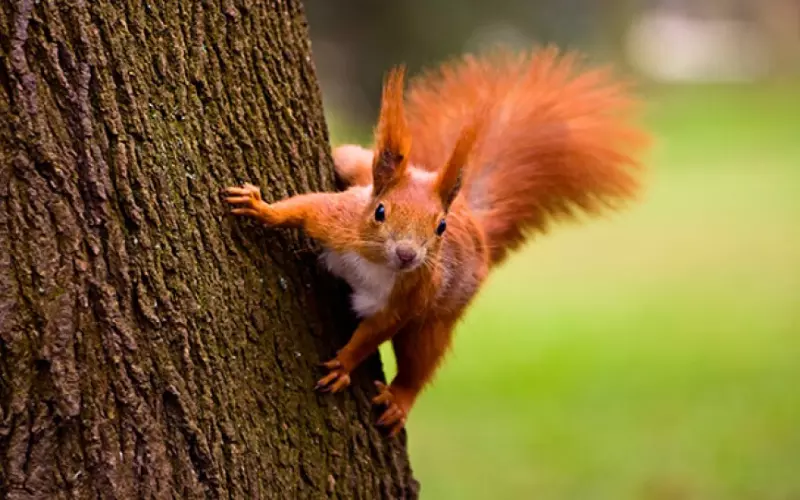
1. Squirrels are small mammals that belong to the rodent family.
2. There are more than 200 species of squirrels found all around the world, except for Antarctica and Australia.
3. Squirrels usually have slender bodies, fluffy tails, and sharp claws for climbing trees.
4. They vary in size, with some species measuring only a few inches long, while others can grow up to three feet long, including their tail.
5. Squirrels have excellent vision, and they can see colours, which helps them locate food sources like nuts, seeds, fruits, and even bird eggs.
6. Unlike many other mammals, squirrels can rotate their ankles 180 degrees, which allows them to climb down trees headfirst.
7. They are known for their cleverness and resourcefulness, often storing food in various locations called “caches” to help them survive during winter when food is scarce.
8. Squirrels have a keen sense of smell, which helps them find hidden food items or detect potential predators.
9. Some species of squirrels can glide through the air using a special membrane called a patagium, which stretches between their back legs and tail.
10. These animals have a lifespan varying from three to ten years, although many of them do not live beyond their first year due to predators or other dangers.
11. Squirrels are diurnal creatures, meaning they are most active during daylight hours and rest during the night.
12. They communicate with each other through a variety of vocalizations, such as chattering, whistling, or using ultrasonic sounds that humans cannot hear.
13. Squirrels build nests, known as dreys, typically made of twigs and leaves, high up in trees to provide shelter and safety for themselves and their young.
14. While most squirrels are herbivores, some species, like the flying squirrel, also eat insects, small birds, or bird eggs to supplement their diet.
15. Squirrels have a significant impact on their ecosystems by dispersing seeds they collect, helping with forest regeneration, and providing a food source for other animals.
Can we keep Squirrel as our Pet?

Squirrels are cute little creatures that many people enjoy watching as they scamper around in trees and parks. They have bushy tails and are known for their elegant movements. However, when it comes to keeping squirrels as pets, it’s important to consider a few factors.
Firstly, squirrels are wild animals and have specific needs and instincts that cannot be met in a domestic setting. They are natural climbers and need ample space to move around and exercise. Keeping them in a small cage or indoors all day can be stressful and unhealthy for them. Additionally, squirrels need a varied diet that includes nuts, fruits, vegetables, and insects. Providing a balanced diet may be challenging and expensive.
Secondly, squirrels are very active creatures and need constant mental stimulation. They enjoy climbing, jumping, and exploring their surroundings. They are not typically content with staying still or being cuddled like other small pets. Squirrels are also notorious chewers, and unless provided with plenty of toys and branches to chew on, they may end up damaging furniture and other household items.
Lastly, it is essential to remember that squirrels are wild animals, and their behaviour can be unpredictable. They may become territorial or aggressive, especially during breeding seasons. Squirrels also have sharp teeth and claws that can cause harm when they feel threatened or scared. Their instincts may not align well with the dynamics and expectations of being a pet.
In conclusion, while squirrels are fascinating creatures to observe in their natural habitat, keeping them as pets may not be suitable or ethical. Their wild nature and specialized needs make it challenging to provide a fulfilling and safe environment in a domestic setting. It is best to appreciate squirrels from a distance and focus on supporting their natural habitats where they can live happily and thrive.
Size of Squirrel

Squirrels are small animals that can be found in many parts of the world. They come in different sizes, but most squirrels are around 6 to 12 inches long. That’s about the size of a ruler! However, the size of a squirrel can also depend on its species. Some are a bit smaller, while others can grow a little bigger.
You may have seen squirrels running around in parks or even in your backyard. They are known for their bushy tails, which can measure up to the length of their bodies. The tails are not just for show – they serve a purpose! Squirrels use their tails to balance themselves as they leap from tree to tree. They also use them for communication. If a squirrel flicks its tail rapidly, it usually means it is feeling nervous or scared.
Despite their small size, squirrels are very agile and quick. They have strong hind legs that allow them to jump long distances. Their sharp claws help them climb trees effortlessly, and they can even run up and down trunks headfirst! Squirrels are also known for their ability to bury and find their food easily. They have excellent memory and can remember where they hid their nuts for a long time.
Squirrels may be small, but they are fascinating creatures. Their size doesn’t stop them from exploring their surroundings and facing the challenges of everyday life. So, next time you spot a squirrel, take a moment to appreciate their small yet remarkable nature.
Habitat of Squirrel

Squirrels are small, agile creatures that are found all around the world. They inhabit a wide variety of habitats, including forests, woodlands, parks, and even urban areas. These clever critters are adaptable and can make do with different types of environments.
In the forest, squirrels build their homes in the hollows of trees or construct nests called dreys made of twigs, leaves, and moss. These nests are often found high up in the tree branches, providing safety from ground predators. Squirrels also dig burrows in the ground, creating tunnels and rooms to live in. They line their burrows with soft materials like grass, leaves, and fur to make them cosy and warm.
In urban areas, squirrels make use of man-made structures for their habitats. They may nest in attics, sheds, or even inside hollowed-out tree trunks. Parks and gardens with plenty of trees and shrubs are also popular squirrel hangouts. They are skilled at adapting to urban environments and can be seen leaping from tree to tree or scurrying along power lines.
Overall, squirrels are resourceful creatures that can thrive in various habitats. They can adjust to different surroundings, whether it’s in the natural wilderness or within human settlements. Their homes provide them with protection, comfort, and a place to raise their young. As we observe these cute furry creatures, we can appreciate their ability to adapt and make the best of their surroundings, no matter where they reside.
Classification of Squirrel
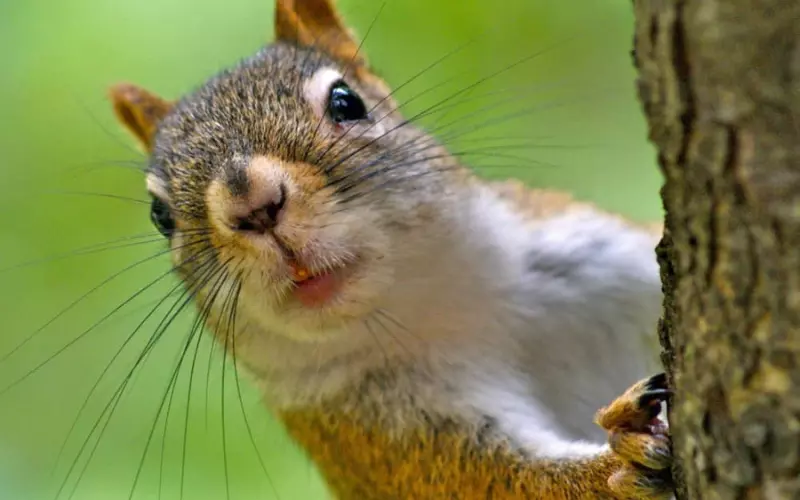
Squirrels are small and adorable creatures that belong to the family Sciuridae. They are mammals and are classified as rodents. Rodents are a group of animals that have large front teeth that continuously grow throughout their lives. Some other common rodents include mice, rats, and beavers.
There are approximately 280 species of squirrels that can be found all over the world, except in Australia and Antarctica. They are mainly categorized into three types based on their habitat: tree squirrels, ground squirrels, and flying squirrels.
Tree squirrels are the most common type of squirrels and are found in wooded areas. They live in trees and build their nests, called dreys, using leaves and twigs. Tree squirrels have sharp claws that help them climb trees, and they have long, bushy tails that help them balance. Some well-known species of tree squirrels include red squirrels, grey squirrels, and fox squirrels.
Ground squirrels, as their name suggests, live in burrows underground. They dig tunnels and chambers to create their homes. Ground squirrels are excellent diggers and can quickly disappear into their burrows when they sense danger. Some examples of ground squirrels are prairie dogs, chipmunks, and groundhogs.
Flying squirrels are unique because they have a special membrane called a patagium that stretches between their forelimbs and hindlimbs. This membrane allows them to glide from tree to tree. They are nocturnal animals, meaning they are active at night. Some species of flying squirrels are the Northern flying squirrel and the Southern flying squirrel.
In conclusion, squirrels are classified as rodents and belong to the family Sciuridae. They can be divided into three main types: tree squirrels, ground squirrels, and flying squirrels. Each type has its special adaptations that help them survive in their specific habitats.
Different Types of Squirrel
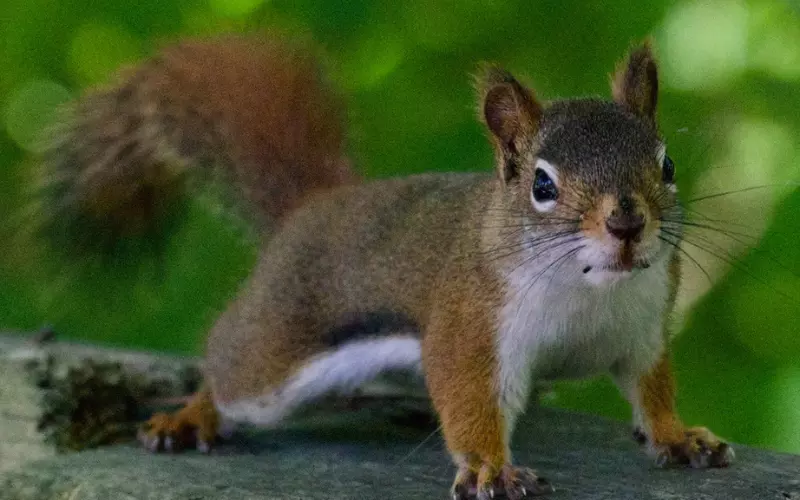
1. Grey Squirrel: The grey squirrel is one of the most common types found in North America. They have grey fur and bushy tails and are skilled climbers. They are known for their adaptability and ability to thrive in both urban and rural environments.
2. Red Squirrel: The red squirrel is a small, agile species commonly found in Europe and North America. They have red-brown fur tufted ears and are known for their agility. Red squirrels primarily reside in forests and can be identified by their distinctive ear tufts.
3. Fox Squirrel: Fox squirrels are larger and have a range of colour variations, including reddish-brown, black, and grey coats. They are known for their bushy tails and are found in regions across North America. Fox squirrels are known to inhabit both urban areas and wooded landscapes.
4. Flying Squirrel: As the name suggests, flying squirrels don’t actually fly but glide through the air. They possess a fold of skin called a patagium, which stretches between their front and back legs, allowing them to glide from tree to tree. They are nocturnal creatures and can be found in various parts of the world.
5. Eastern Gray Squirrel: The Eastern Gray Squirrel, also known as the American Red Squirrel, is a subspecies of the grey squirrel. They have a varied diet, primarily consisting of nuts, seeds, fruits, and insects. These squirrels are known to bury their food to save it for later.
6. Southern Flying Squirrel: The Southern Flying Squirrel is a small species found in North America. They have a flattened tail and excel at gliding through the forest canopy using the patagium between their limbs. These squirrels are primarily nocturnal and are known to build nests in tree cavities.
7. California Ground Squirrel: California Ground Squirrels are social creatures that live in underground burrows found across California and other western states of the United States. They have a sandy brown fur colouration and communicate through chirping sounds. They feed on a variety of plant materials, seeds, and even insects.
8. Antelope Squirrel: Antelope squirrels are small, agile rodents found mainly in the southwestern United States and Mexico. They have a light brown coat and are named after their antelope-like behaviour of leaping and bounding. These squirrels feed on seeds, fruits, and vegetation in arid desert environments.
9. Rock Squirrel: Rock squirrels are known for their adaptability to rocky terrains and arid environments. They possess a thick coat of fur ranging from grey to brown and white. They inhabit lowland areas and rocky slopes in regions such as North and Central America.
10. Groundhog: Groundhogs, also known as woodchucks, are a type of marmot. While not technically squirrels, they are often considered as part of the squirrel family. Groundhogs are known for their burrowing habits and their ability to hibernate during winter. They primarily feed on vegetation such as grass, fruits, and flowers.
Geographical Presence of Squirrel
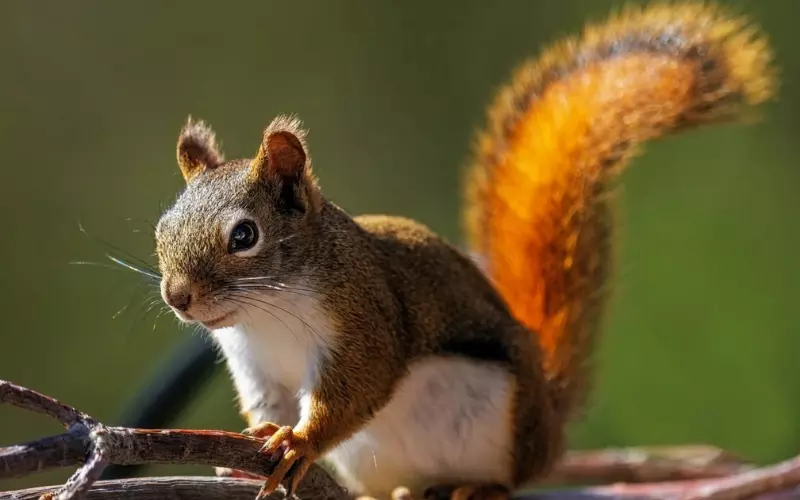
The squirrel is a small and furry animal that is commonly found in many regions around the world. It can be seen in North America, Europe, Asia, and parts of Africa. These regions provide the squirrels with the suitable habitat they need to thrive, such as forests, woodlands, and urban areas with plenty of trees for climbing and building nests.
However, there are some places where squirrels are not found. For example, you won’t see squirrels in the deserts of Africa or the icy regions near the North and South Poles. These extreme environments do not offer the necessary resources and conditions for squirrels to survive. Additionally, squirrels are not found in certain islands or isolated areas where they have not been introduced or have not naturally migrated.
The squirrel is found in many regions worldwide, including North America, Europe, Asia, and parts of Africa, where they can find suitable habitats to live in. On the other hand, squirrels are not found in extreme environments such as deserts or icy regions, as well as in certain islands or isolated areas where they have not been introduced or migrated to naturally.
Diet of Squirrel’s
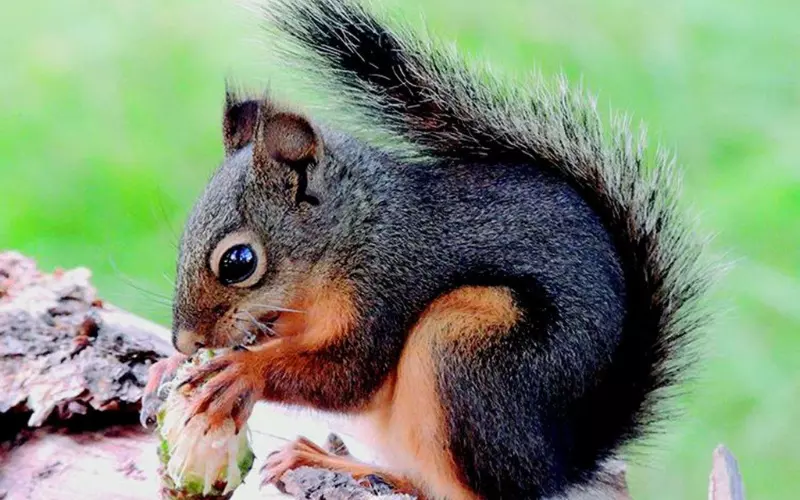
Squirrels are small, furry animals that live in trees. They eat a variety of foods to keep themselves healthy and strong. One important part of a squirrel’s diet is nuts. They love to munch on acorns, walnuts, and hazelnuts. Nuts provide squirrels with lots of energy to climb trees and jump from branch to branch. Squirrels are also very clever and hide nuts to eat later when food is scarce.
In addition to nuts, squirrels eat fruits and vegetables. They enjoy apples, berries, and even corn. Squirrels are quite crafty when it comes to getting their food. They will climb up trees or jump onto bird feeders to steal tasty snacks. Sometimes, they even dig up buried vegetables or raid small gardens. Squirrels have sharp teeth that help them crack open shells so they can easily eat their favourite foods.
Lastly, squirrels need to drink water to stay hydrated. They often find water in ponds, rivers, or even puddles after it rains. Squirrels are good swimmers and can paddle through water to reach nearby islands or escape from predators. They are quick and agile creatures, always on the lookout for their next meal. With their varied diet, squirrels are able to find food in different places and adapt to changing environments.
Locomotion of Squirrel’s
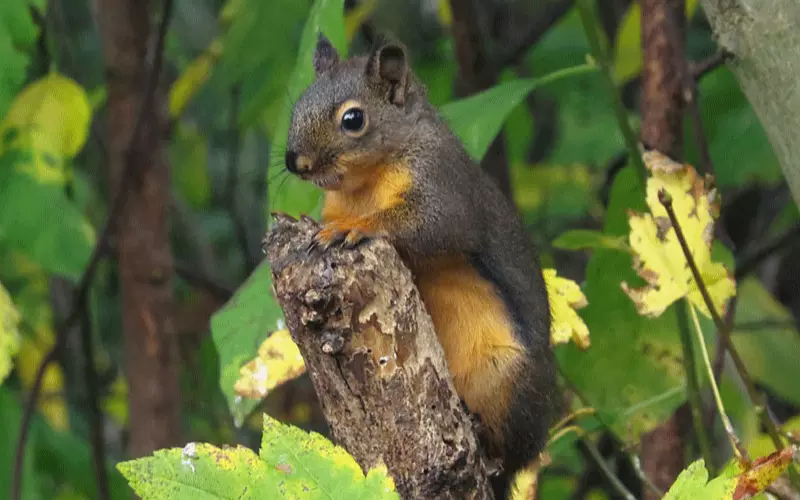
Squirrels move in a special way called locomotion. They have four legs that help them walk, run, and climb trees. When squirrels walk on the ground, they use all four legs to move forward. Their front legs are shorter, but they can still support their body. With their long and flexible tail, they keep their balance while moving.
Squirrels are really good at running, too! They can run very fast, often chasing each other playfully. When they run, squirrels use their back legs to push off the ground and move forward quickly. Their strong legs give them the power to jump from branch to branch in the trees. Squirrels have adapted to their environment by developing these skills, making them agile and efficient in their locomotion.
Social and Sexual Behaviour of Squirrels
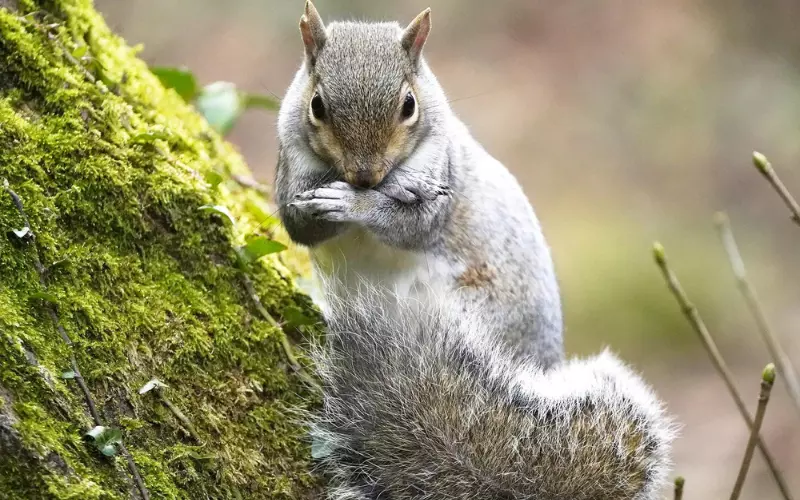
Squirrels are fascinating creatures when it comes to their social behaviour. They usually live in groups called colonies or drays. These groups are made up of related squirrels, such as siblings or parents and their offspring. They communicate with each other using a variety of sounds, such as chattering, barks, and even high-pitched screams. These noises help them warn others about potential dangers or assert their dominance. Squirrels also defend their territories by chasing away other squirrels that wander too close.
When it comes to their sexual behaviour, squirrels usually mate once or twice a year, depending on the species. Males compete for the attention of females by engaging in thrilling chase or wrestling games. The females then choose a mate based on factors such as the male’s strength and ability to find food. Once the pair has mated, they usually go their separate ways, and the female raises the babies alone. Squirrels give birth to their offspring, called kits, in nests made of twigs, leaves, and other cosy materials.
Squirrels are highly social animals that live in groups and use various sounds to communicate with each other. They also engage in exciting and playful courtship rituals before mating. Afterwards, the females take on the responsibility of raising the kits by themselves. Squirrels may be small, but their social and sexual behaviours are full of interesting dynamics that help them survive and thrive in their natural habitats.
Reproduction and Lifecycle of Squirrel’s
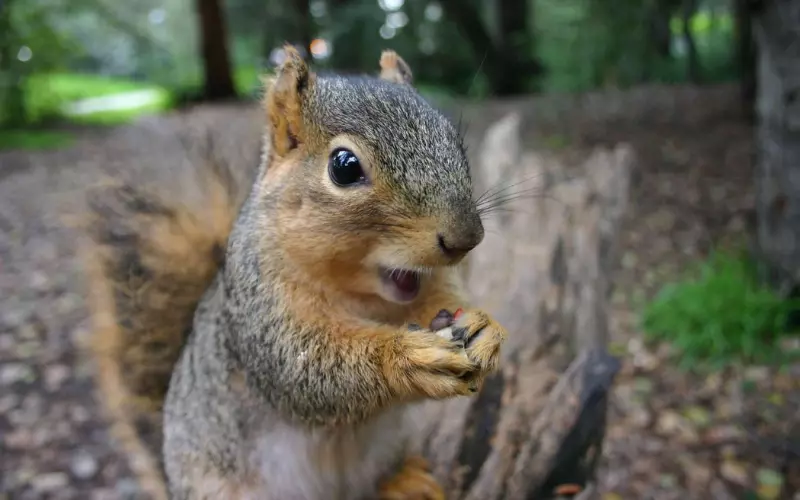
Squirrels, like many animals, are part of the circle of life. They have a unique and interesting reproductive process, which includes specific stages in their life cycle. Let’s explore these fascinating aspects of squirrel life!
Reproduction is an important part of a squirrel’s life. Female squirrels typically give birth to their babies, called kits, once or twice a year. The process starts with the male squirrels trying to attract the females through various behaviours like chasing, jumping, and making sounds. Once the female chooses a mate, they engage in a short mating session. After this, the male leaves and has no further involvement in raising the kits.
Once the mating is complete, the female squirrel prepares for the arrival of her babies. She seeks out a safe and secure shelter, such as a hollow tree or nest, and builds a nest using leaves, twigs, and other materials. The gestation period lasts for about 25-45 days, after which the female gives birth to an average of three to five baby squirrels. The kits are born blind and hairless, relying on their mother for warmth and nutrition.
As the weeks pass, the mother cares for her young by nursing them and keeping them safe. After about six to eight weeks, the kits start venturing out of the nest, exploring their surroundings under their mother’s watchful eye. As they grow, the mother teaches them important skills like climbing and foraging for food. Eventually, the kits become independent and leave to establish their territories, continuing the cycle of life.
The reproduction and life cycle of squirrels is a wonderful example of the natural world’s processes. From mating to birth and the early stages of life, each step brings squirrels closer to adulthood and independence. It is truly amazing how animals like squirrels go through these stages, contributing to the biodiversity and beauty of our planet.
Threats to Squirrel’s
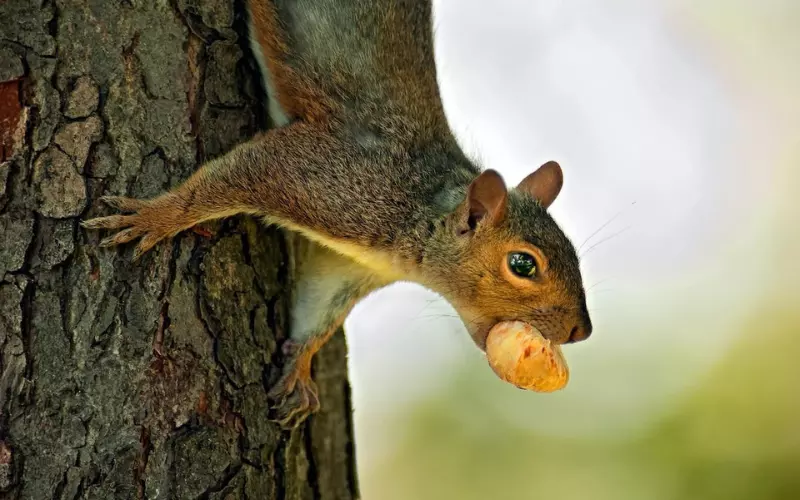
Squirrels face various threats in their natural habitats. One major threat comes from predators such as birds of prey, snakes, and larger mammals like foxes and cats. These animals hunt squirrels for food and can catch them easily due to their agile movements and sharp senses. Squirrels have to be constantly alert to escape from their predators and find safe places to hide.
Another threat to squirrels is the loss and fragmentation of their habitats. Deforestation and urbanization are the main causes of this threat. As people cut down trees and build cities or expand agricultural areas, the available space for squirrels decreases. This reduces their food sources and shelters, forcing squirrels to search for new territories. In some cases, this can lead to higher competition for limited resources and increased conflicts between squirrels.
Lastly, squirrels are also vulnerable to diseases and parasites. They can suffer from infections caused by bacteria, viruses, and fungi. Additionally, they can be infested by parasites like fleas, ticks, and mites, which weaken their overall health and make them more susceptible to other threats. Diseases and parasites can spread quickly among squirrel populations, especially when they live close together in large numbers.
Overall, squirrels face threats from predators, habitat loss, and diseases/parasites. These challenges make it difficult for them to survive and thrive in their natural environments. Efforts to protect and preserve their habitats, along with measures to control predators and manage diseases, play a crucial role in safeguarding the survival of these furry creatures.
Conclusion
In the big family of animals, squirrels are some of the most fascinating creatures. These little animals have a long history, stretching back millions of years. Fossils of ancient squirrels have been found all around the world, showing us that they have been scurrying around for a very long time.
There are many interesting facts about squirrels. Did you know that they have sharp teeth that never stop growing? This allows them to nibble on nuts and seeds easily. Squirrels are also incredible climbers, thanks to their sharp claws and powerful leg muscles. They can even jump from tree to tree, showing off their impressive acrobatic skills!
Squirrels come in all shapes and sizes, depending on where they live. Some squirrels, like the African pygmy squirrel, are tiny and can fit in the palm of your hand. Others, like the Malabar giant squirrel, can grow as long as three feet! No matter their size, these clever animals are known for their adaptability and ability to thrive in various habitats all around the world.
From their fascinating history to their unique characteristics, squirrels are truly incredible creatures. So, the next time you spot a squirrel in your backyard or at the park, take a moment to appreciate these amazing animals and all the joy they bring to our world.
FAQ’s
What is a squirrel?
A squirrel is a small to medium-sized rodent known for its bushy tail and agile climbing ability.
How many species of squirrels are there?
There are over 200 species of squirrels worldwide.
Where are squirrels found?
Squirrels can be found in various habitats across North and South America, Europe, Asia, and Africa.
What do squirrels eat?
Squirrels primarily eat nuts, seeds, fruits, and fungi. Some species also consume insects and small vertebrates.
Are squirrels territorial animals?
Yes, squirrels tend to be territorial and mark their territory with scent markings and vocalizations.
How high can squirrels jump?
Squirrels are exceptional jumpers and can leap up to 15 feet vertically and 20 feet horizontally.
Do squirrels hibernate?
While some squirrels hibernate during the winter months, many species remain active throughout the year.
How long do squirrels live?
The lifespan of squirrels varies among species, but most typically live between 5 and 10 years in the wild.
Can squirrels swim?
Yes, squirrels are capable swimmers and can swim for long distances if necessary.
Do squirrels communicate with each other?
Yes, squirrels communicate with various vocalizations, such as chirping and barking, as well as through body language and scent markings.
What are some natural predators of squirrels?
Some natural predators of squirrels include hawks, owls, snakes, foxes, and domestic cats.
Can squirrels be kept as pets?
While it is possible to keep squirrels as pets in some places, it is generally not recommended as they have specific dietary and environmental needs.
How do squirrels contribute to the ecosystem?
Squirrels play an important ecological role as seed dispersers. They bury nuts and seeds, which often results in the growth of new trees and plants.
Are squirrels harmful to humans?
Squirrels are not typically harmful to humans, but in some cases, they may cause damage to property by chewing on wires, insulation, and wooden structures.
Are squirrels a protected species?
Squirrels are not generally considered a protected species, but local or regional regulations may protect some specific squirrel species.

Hi there! I’m Morgan Gutierrez, and I love animals! I work as a Seasonal Animal Care Specialist at Brookfield Zoo and also teach people about animals, which is super fun. I studied at Valparaiso University in Lockport, Illinois, where I learned even more about these amazing creatures.
I’m not just about taking care of animals; I write articles about them, too! I explore and share many interesting animal stories, from cute kittens to giant elephants.
In the past, I’ve worked with veterinarians, helped with research, and even been an Animal Ambassador, bringing animals closer to people. Animals are my passion, and I enjoy helping others learn about them. So, if you ever want to know about animals, feel free to ask. I’ll explain it in a way that’s easy to understand, just like talking to a friend!












